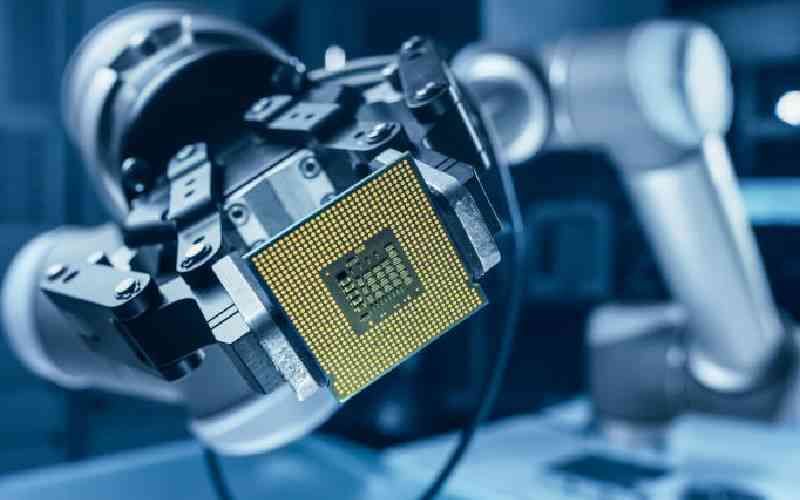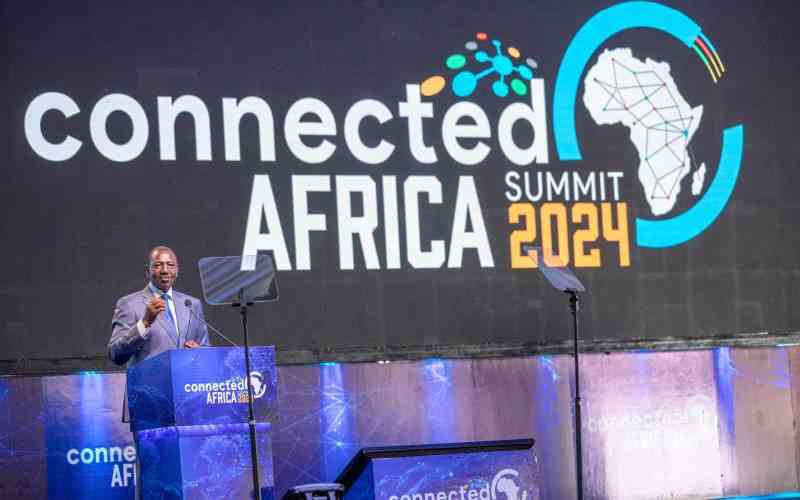Technology is one of the country’s key drivers in realising Vision 2030, and in line with this, the Government has underscored universal access to ICT as a major objective.
Access to technology is expected to contribute to the country’s growth by reducing the costs of business, increasing efficiency, and improving educational standards and accountability from Government officials.
But inadequate access to the Internet and broadband still curtail technology uptake. For Kenya to become a top investment hub in the region, a large population needs to access the Internet.
To this end, the country has made tremendous strides in putting together an ICT policy framework and implementation strategy, complete with measurable results. However, the universal realisation of this strategy has been quite challenging for reasons like inadequate resources, national ICT infrastructure and electricity supply.
Technology is bound to control our future lives just as much as it does our present, so it is important that we obtain know-how of technological reforms at the earliest opportunity.
Already, e-Learning initiatives have came into play as part of the economic stimulus package to schools to curb the challenges of inadequate funding in digital content production. The use of technology in education has been found to enhance content delivery, and expand available teaching and learning resources. Further, the inclusion of technology in schools makes learning a more enjoyable activity, thus creating greater interest from learners.
The huge opportunities that technology presents has persuaded both the Government and education stakeholders to roll out digital devices that are preparing children for a highly competitive global economy that relies heavily on rapid innovation.
Solar-powered internet
With the help of e-Learning platforms, teachers and students are able to interact through web-based portals, and access the latest curriculum content through personal computers, laptops and tablets.
Despite challenges like inadequate ICT and e-Learning infrastructure and financial constraints, the impact of technology, if well harnessed especially among children who are quick to learn and adapt, is quite huge.
If these children are well trained — which is possible given the evolution of affordable smart mobile devices and easy access to free applications — they have high chances of becoming experts.
But while education is widely acknowledged as a key factor in ensuring sustained human development, the ability to read remains a big challenge in Africa.
According to a Unesco report in 2014, East African countries had the lowest levels of literacy at 27 per cent. This has caused corporate organisations to initiate programmes that focus on the deployment of ICT infrastructure and professional development of teachers and students, with the aim of integrating ICT into their curriculum.
It is against this backdrop that Samsung Electronics East Africa is providing a technology-rich learning and teaching environment in rural schools to propel students to pursue innovative solutions.
In Rongai, Kajiado County, for instance, Samsung introduced the Solar-Powered Internet Schools (SPIS) programme at Arap Moi Primary School, an initiative that utilises cloud technology to enhance the quality of education in rural areas that are outside the electricity grid. The programme focuses on deployment of ICT infrastructure, such as Samsung’s E-board, multi-purpose printer and tablets, to enhance learning.
Stay informed. Subscribe to our newsletter
As industry and the Government look forward to the Innovation Africa 2016 forum scheduled for next week, it is my belief that technological innovations will form the benchmark of the discussion.
This annual education and ICT forum will see more than 30 African countries represented, and should allow industry leaders and investors to engage constructively in realising a technology-driven Africa.
The writer is vice president and managing director, Samsung Electronics East Africa.
 The Standard Group Plc is a
multi-media organization with investments in media platforms spanning newspaper
print operations, television, radio broadcasting, digital and online services. The
Standard Group is recognized as a leading multi-media house in Kenya with a key
influence in matters of national and international interest.
The Standard Group Plc is a
multi-media organization with investments in media platforms spanning newspaper
print operations, television, radio broadcasting, digital and online services. The
Standard Group is recognized as a leading multi-media house in Kenya with a key
influence in matters of national and international interest.
 The Standard Group Plc is a
multi-media organization with investments in media platforms spanning newspaper
print operations, television, radio broadcasting, digital and online services. The
Standard Group is recognized as a leading multi-media house in Kenya with a key
influence in matters of national and international interest.
The Standard Group Plc is a
multi-media organization with investments in media platforms spanning newspaper
print operations, television, radio broadcasting, digital and online services. The
Standard Group is recognized as a leading multi-media house in Kenya with a key
influence in matters of national and international interest.








